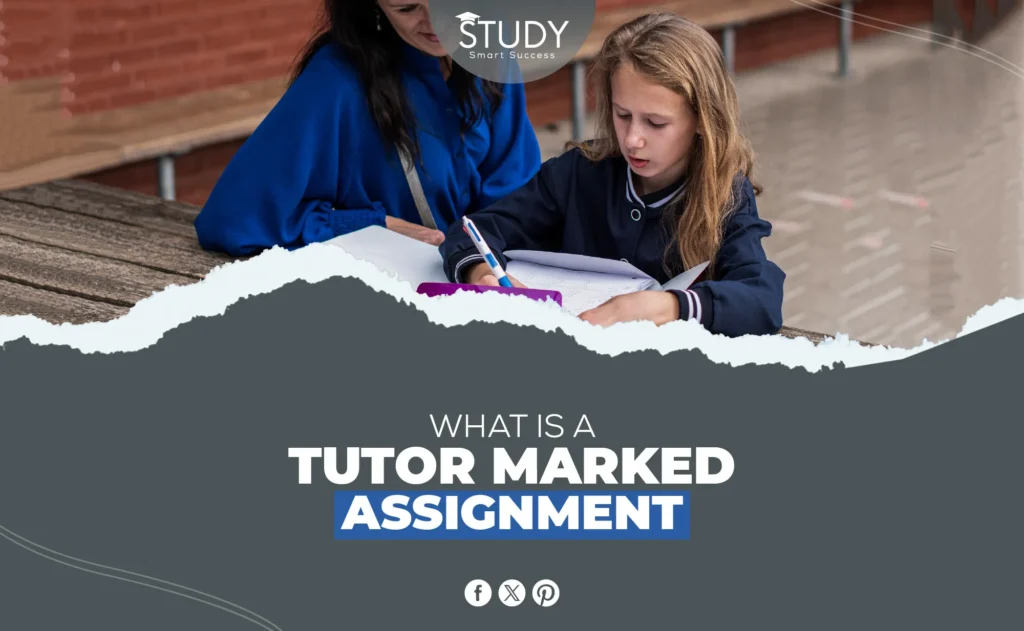Introduction
Are you a student asking themselves the same question regularly, “What exactly is a tutor-marked assignment meaning (TMA)?” In that case, you are not the only one. There is no question that assignments that a teacher marks can be challenging, even though they are becoming a more common component of the educational experience.
This blog post seeks to provide some insights into these innovative yet often confusing tasks, beginning with a definition of exactly what TMAs are and how to prepare for them and complete them effectively and efficiently. If you want to learn more about TMAs and their significance in the modern educational system, continue reading!
If you are worried about the assignments marked with your tutor, how to write them, create them, and which topics to cover. Don’t worry about it. After I have done enough research, these titles have been made to the following links.
Choosing the right tutor-marked assignments.
The ultimate guide to tutor-marked assignment structure.
How do you write tutor-marked assignment introductions?
What is a Tutor Marked Assignment (TMA)?
Are you a student who wants to learn more about online classes? You may have heard of Tutor Marked Assignment (TMA) if so. A TMA is a test that Open Universities and other distance learning providers use to see how well students are doing and how much they understand a subject. For the most part, a TMA is a task or test that a student does and then has a teacher grade.
The assignments are meant to interest students in the course content and help them learn new things. Most TMAs are filled out and sent in digitally, either online or through a digital tool. Overall, doing a TMA is an important part of online learning and a great way to find out how you’re doing in school.
How does it differ from traditional exams and tests in an educational setting
Schools have always done things in a certain way. Tests are a part of this. The tests that people take change, though, as times change. Most of the time, tests and exams are the best way to determine how much a student knows about a subject. However, more and more schools are picking different tests that are more fun and involve the students in the process.
These days, tests are made in a way that makes students think critically, rationally, and creatively. Traditional tests and exams focus on remembering and reciting what you have learned. It lets them use what they’ve learned instead of just going over it repeatedly, which helps them learn how to solve problems. Because of this, current tests show a lot more about a student’s skills than just how well they can remember and repeat.
Types of TMAs: essay, multiple-choice, short answer, etc.
All of us students are familiar with the different tests we must take through school. There are different ways to do well on tests, from easy multiple-choice questions to harder essay tasks. Multiple-choice questions make us think quickly and firmly, while essay prompts make us think about what we’ve read and put it all together in a way that makes sense.
True or false questions test our understanding and how well we pay attention to details, while short answer questions ask us to be brief and clear. To do well on any test, we need to know all the details about them and be ready to take on anything.
Benefits of executing a TMA in the classroom setting
For kids to learn, the classroom can be busy and hard. But if they want to understand, having a good grasp of the subject can help them. Teachers can ensure that their students get feedback as they learn by giving a TMA (Teacher-Made Assessment).
This type of test can be changed to fit the needs of each school and teacher. Teachers can also determine their students’ good and bad by making a TMA. This can help them plan better lessons in the future. Ultimately, using TMAs can make students more interested in and driven to learn, improving school overall.
Examples of common mistakes students make while completing TMA’s
College students may find that doing tutor-marked tasks (TMAs) is hard and fun. When people work in these jobs, they often make mistakes. People often mess up when they don’t carefully read the professor’s directions. This can lead them to miss important details or not meet the requirements.
Avoid putting things off because you might not finish the job on time or turn in work that isn’t fully developed. It’s against the rules to plagiarize, so being unable to study and properly quote sources is also wrong. Students need to remember these things when working on TMAs: they want to get good grades and learn new skills that will help them.
Tutor Marked Assignment Example
A tutor-marked assignment example helps understand a course’s requirements. Knowing what your instructor expects from you is crucial when given a task. A tutorial-marked assignment (TMA) explains how your work is evaluated. This ensures you meet standards and deliver quality work.
For students, a TMA serves as an opportunity to showcase their learning progress and skills. It allows them to apply the knowledge virtually gained from their studies. By completing TMAs, students can receive feedback from their instructors on areas.
Here are a few examples of tutor-marked assignments that students may encounter during their academic journey:
- Written assignments: These can include essays, reports, research papers, and case studies that require students to analyze and present their ideas on a particular topic critically.
- Problem-solving assignments: In subjects like mathematics or sciences, students may be given tasks requiring them to apply their knowledge and skills to solve complex problems.
- Presentations: Instructors may ask students to prepare presentations on a specific topic and present them in front of the class, evaluating their ability to communicate effectively and engage the audience.
- Online quizzes or tests: With the rise of online learning, many courses now include online assessments in the form of quizzes or tests to evaluate students’ understanding of the course material.
- Practical assignments: In subjects like art, design, or technology, students may be asked to complete hands-on tasks demonstrating their practical skills and techniques learned in class.
Tutor-marked assignments test students’ topic knowledge, critical thinking, and practical skills. They give a balanced assessment of a student’s learning and let them demonstrate their course knowledge. Take your TMA seriously and use it to succeed academically! So, follow your instructor’s instructions and work hard on the assignment.
Tips for completing TMAs
Tutor-marked assignments can be stressful for students who don’t know their teachers’ desires. A few techniques can simplify the procedure. Check the instructions to make sure you understand them. Second, manage your time and finish the TMA on time.
Third, use your course materials and web research to answer all questions. Finally, answer all TMA questions and reread your work before submitting it. These simple methods will help you finish TMAs and achieve good grades.
Conclusion
Lastly, TMAs enable students to demonstrate their knowledge at their speed. Knowledge about TMAs and their needs helps students prepare. As they prepare for TMAs, students may enjoy them. Tutoring services and teacher aid can also help students with difficult tasks. Using the TMA can boost academic performance. Get started on tutor-marked tasks immediately and take responsibility for your study!
Frequently Asked Questions (FAQs)
Q1: What is a Tutor Marked Assignment (TMA)?
Teachers use a tutor-marked assignment (TMA) test to see how well their students understand and can do in a certain field. They can be questions like short answers, multiple-choice questions, essays, and more.
Q2: How does a TMA differ from traditional examination methods?
Traditional tests mostly test how well you can remember things you’ve learned, but TMAs are meant to test how well you can use what you’ve learned in real life. They help people think critically, reason logically, and be creative.
Q3: What are the benefits of TMAs in a classroom setting?
Students receive detailed and continuing feedback from TMAs to highlight strengths and weaknesses. They are customized for each class and student. TMAs boost student motivation and engagement, improving learning.
Q4: What are some common mistakes students make when completing TMAs?
Common faults include incomplete instructions, procrastination, poorly prepared replies, poor research, and missing or wrong citations. Avoiding these blunders is essential for high grades and academic growth.
Q5: What tips can you provide for completing TMAs?
Completing TMAs requires reading and understanding the directions, planning and managing your time, utilizing course materials for complete responses, and checking your work before submission.





